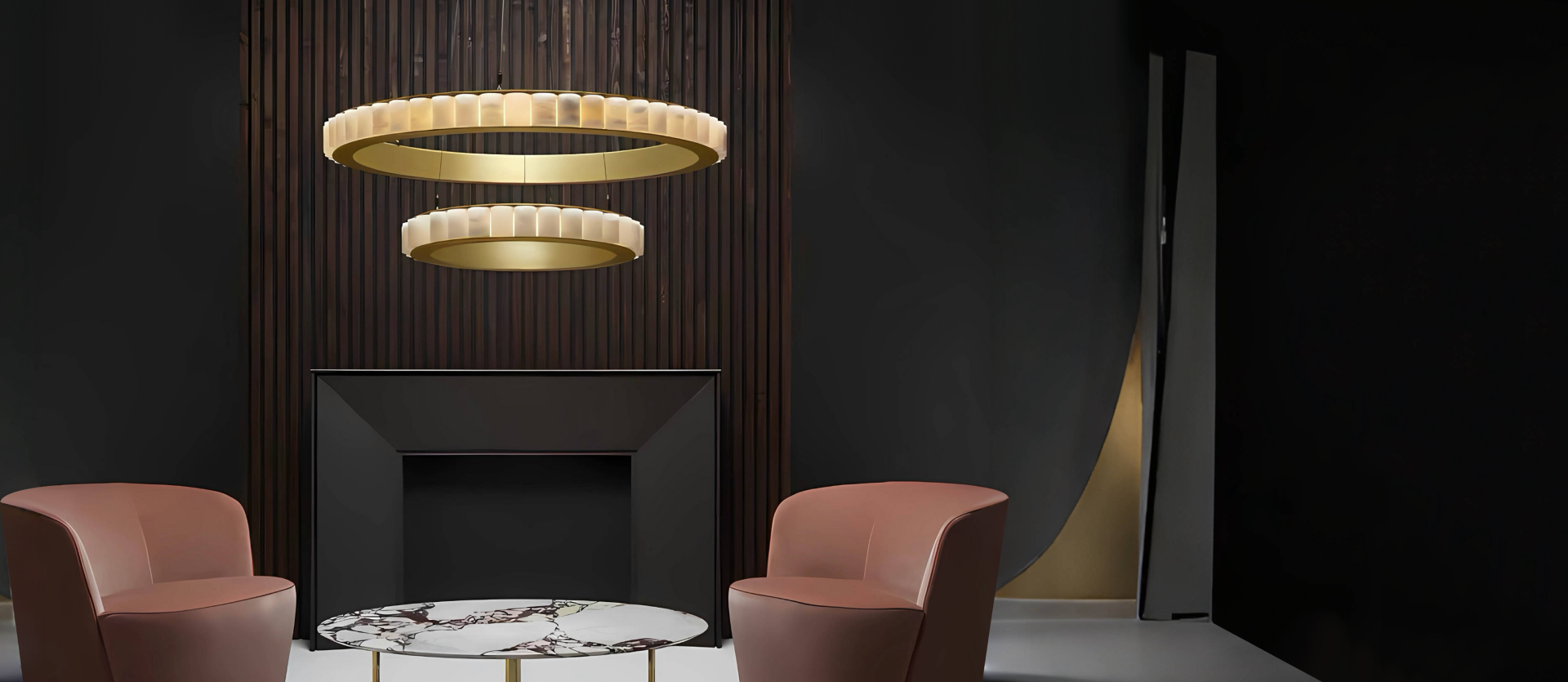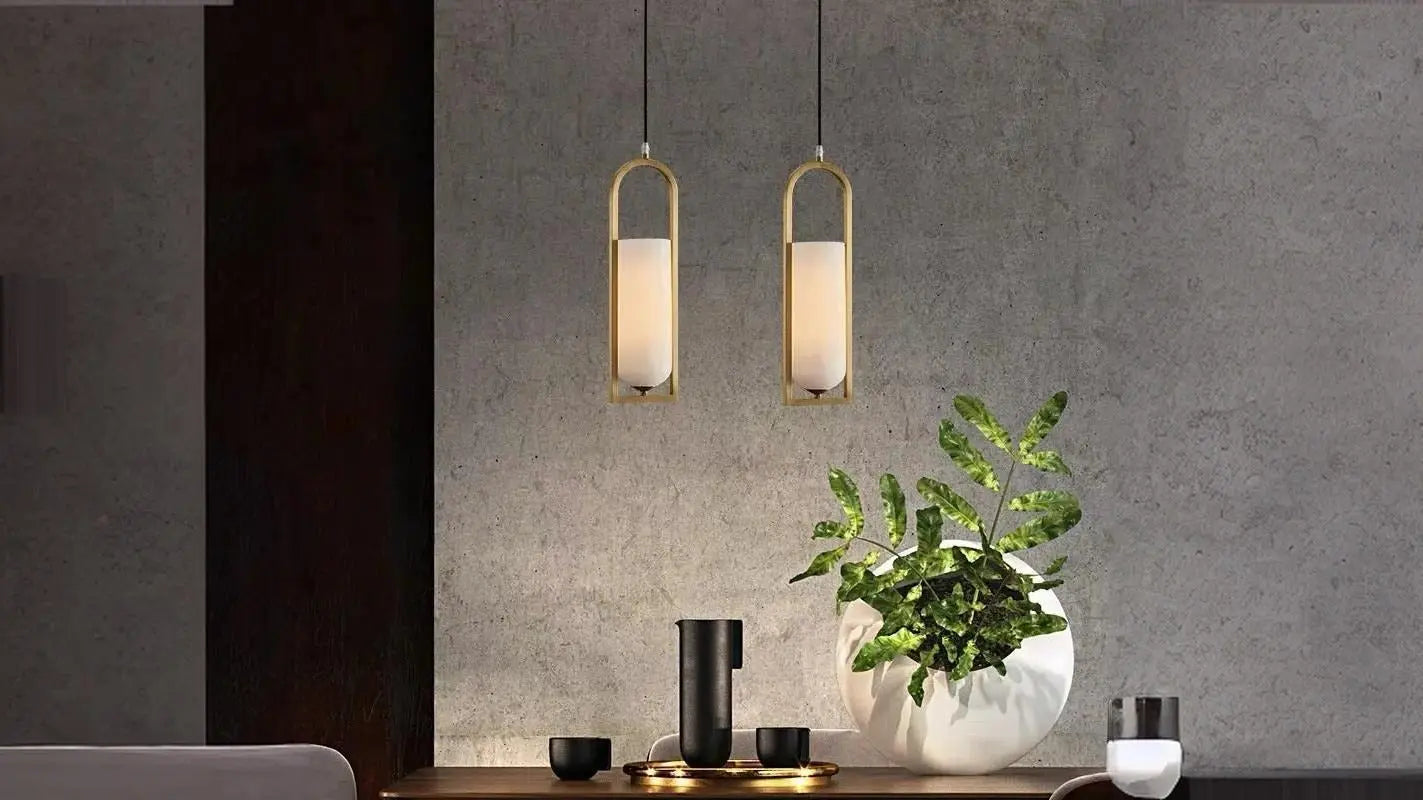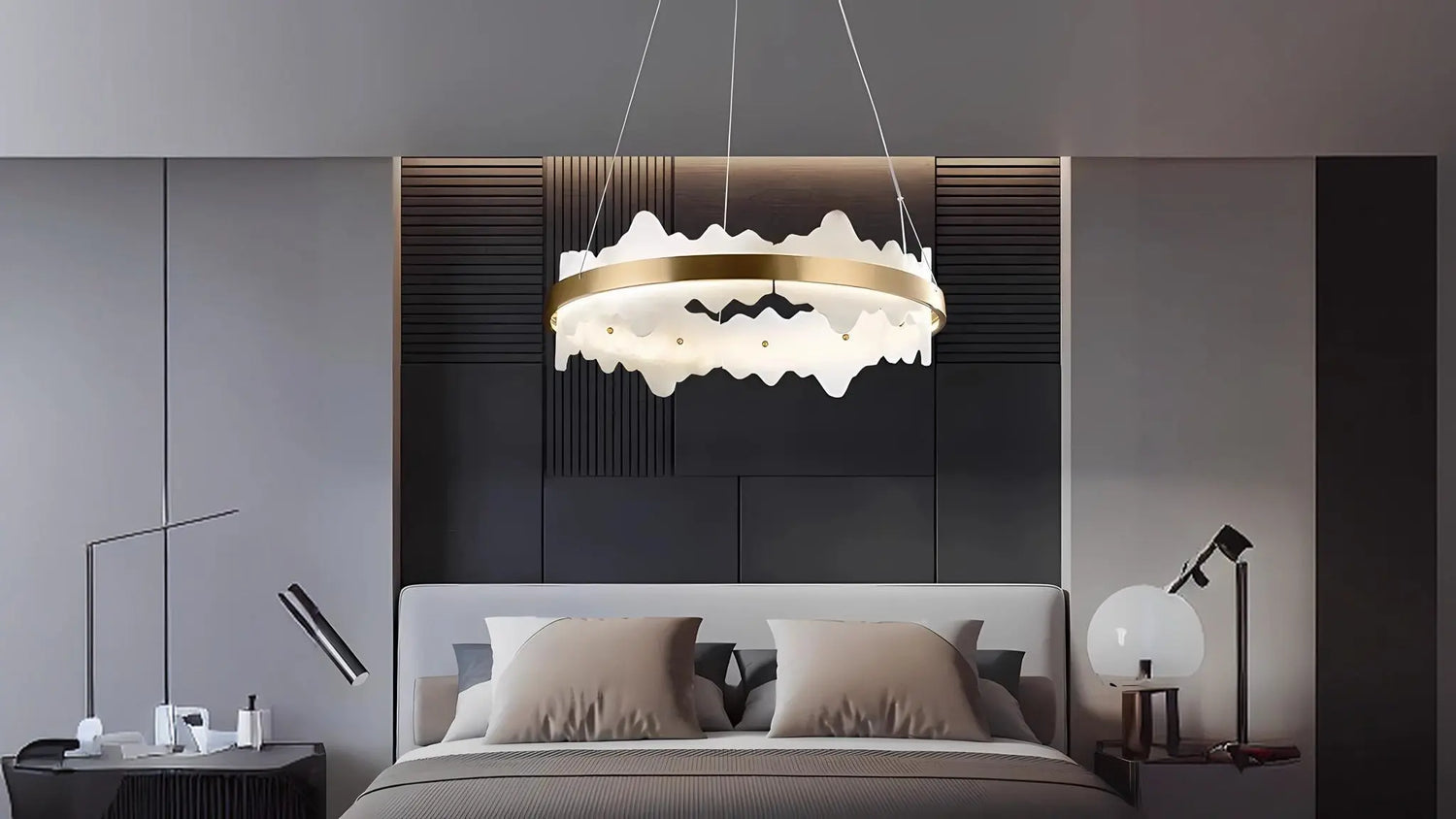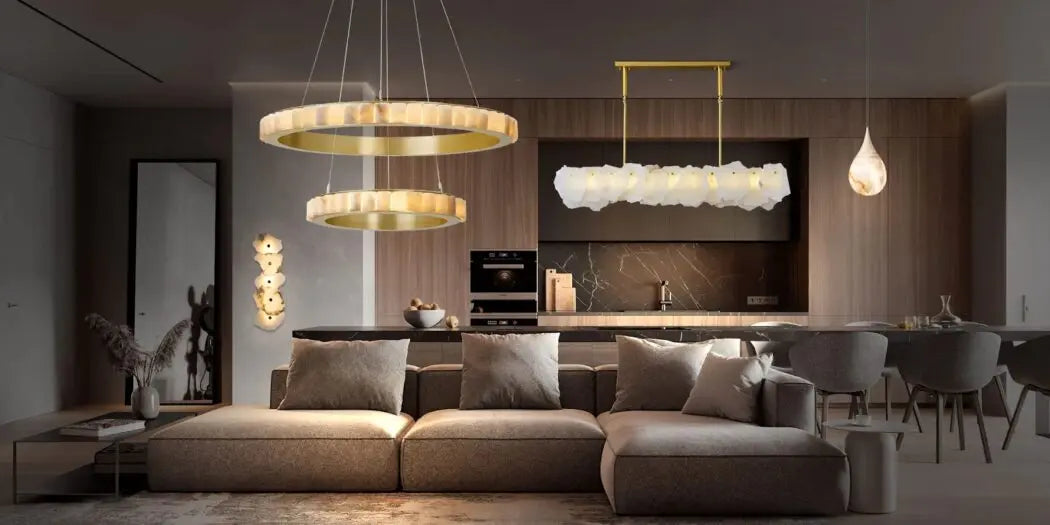
Chandelier VS Pendant Light: Key Differences Explained
Aloysius NoordamChandeliers and pendant lights are very popular for modern houses. They enhance the look, feel, and overall visual appearance of the spaces. However, the use of both lights differs from each other. Chandeliers are used as centerpieces and are less practical than pendant lights. Their differences make people talk about chandelier vs pendant lights.
These lights offer excellent value by uplifting the feel of the spaces. However, they should not be considered as a replacement for practical lights. Their limited practicality and endless visual appeal make them more common in luxury homes and buildings. In this article, I will compare these lights head-to-head. So, let's begin!
Overview of Chandelier & Pendant Light
Before comparing chandeliers and pendant lights, let's first understand their basics.
Chandelier lights
Chandelier lights have a single fixture but have multiple arms attached to it. Each arm has further light sources (bulbs), making this a decorative centerpiece. All the lights remain hung from the ceiling, and make the space look elegant. Their primary purpose is not to illuminate the spaces, but to improve the visual appearance.

These lights have multiple bulbs or light sources. However, these sources are more towards producing ambient lighting. These lights vary in size depending on the room size. Some people prefer small chandeliers that cover only the center of the ceiling. Some chandelier lights can cover the whole ceiling and give an ornate appeal.
Pendant lights
Pendant lights are simple and focus more on functionality. These are light with a single fixture attached to the ceiling. Generally, cords or decorative chains are used to suspend the light from the ceiling. One or multiple pendant lights can be used, depending on individual needs. Multiple pendant lights, when suspended in a row, make the space look elegant.

The pendant lights offer excellent practicality. For example, you can install it on your countertop or kitchen roof. These lights will illuminate the kitchen ideally without any additional bulk. They are more flexible and give you more control. For example, if you have small spaces, you can use single pendant lights instead of installing multiple lights.
Differences Between Chandeliers and Pendant Lights
In the section above, I mentioned some of the basics of these two lighting types. However, there are many differences between chandeliers and pendant lights. Each of those differences can affect your mindset when buying any of these lights. Let's drill down and explain those distinctions:
1- Structure & Functionality
One of the prominent differences between these lights lies in their structures. The chandelier lights have one fixture with multiple arms. Each arm has a lighting source (small bulbs), which can be cylindrical or a regular bulb. Additionally, they can have bulbs in tiers, which makes them look decorative. All the small bulbs or light sources remain attached to a single frame.
On the other hand, pendant lights are different. Each pendant light has its own fixture and frame. You can use this single light. If you need more lights or have more spaces, you'll have to buy multiple pendant lights. Each of those lights will be installed separately. These individual lights will remain suspended through cords from the ceiling.
You can use either single or multiple pendant lights in a single room. The function or purpose of a pendant light is usually more focused. Since it has just one bulb, it gives light to a specific spot instead of spreading light all over the room. That's why pendant lights are often used as task lights. You can hang them over the kitchen, study tables, or reading corners.
2- Style & Aesthetics
Another big difference between a chandelier and a pendant light is the kind of style they bring to the space. For example, chandelier lights are generally designed for custom lighting and to be eye-catching. They are often large and decorated with crystals, glass, metal, or artistic shapes. When someone enters a room, the chandelier is usually the first thing they notice.
This is why chandeliers are often called "statement pieces". They don't just provide light; they also add luxury, elegance, and a feeling of aesthetics to the space. For example, in hotel rooms and ballrooms, chandeliers give a grand impression. On the flip side, pendant lights are simpler and flexible in style.
They are usually small, neat, and can be shaped like a globe, dome, or lantern. So instead of grabbing all the attention like a chandelier, these lights quietly add charm to the space. You can use them as a single light for a clean look or install several in rows to create a stylish effect. Moreover, for aesthetics, you can also match a pendant light with your interior design.
3- Size & Scale
The size and scale of chandelier and pendant lights are another differentiating factor between them. If we look at chandelier lights, they are usually large and designed to fill up space. HOW? The reason lies in their multiple arms and bulbs. Therefore, they naturally take up more space and are better suited for big areas like dining halls.
However, remember, a chandelier looks balanced only when the room is spacious enough and the ceiling is high. If you put a large chandelier light in a small or low-ceiling room, it will make the space feel crowded. As a result, you will feel uncomfortable in that place. On the other hand, pendant lights are smaller and compact.
They have only one fixture and don't take up much space. This makes these lights perfect for small or medium-sized rooms. For example, if you have a very small room, such as a reading corner, you can install a single pendant light to provide sufficient light. However, in the offices where you don't want something too big but still need good lighting, you can install multiple pendant lights.
4- Placement & Flexibility
Where you place the pendant or chandelier lights also makes a big difference. So this is another area where both types of lights differ. HOW? For example, chandelier lights are usually placed in the central location of any space. Because they are big and heavy, they work best when installed right in the middle.
For instance, you can install them over a dining table, in the center of the living room, or in the entryways. However, once you install chandelier lights, you don't have much flexibility to move them around. Their purpose is to light up the whole area equally. This means chandelier lights have limited placement options. On the opposite side, pendant lights are more flexible.

Since they are smaller and lighter, you can install them almost anywhere. These lights don't always need to be in the center of the room. You can install them anywhere, like above the kitchen or beside the bed. You can also use just one pendant or multiple pendants in a row or cluster. This flexibility allows you to create both functional and decorative effects.
5- Material & Durability
The materials used in chandeliers and pendant lights also set them apart. Materials affect how long the fixtures last and how they look over time. If we discuss chandelier lights, they are often made with high-quality and decorative materials. For example, chandelier lights are usually made with glass, crystals, brass, bronze, or other metals.
Many chandelier lights also use multiple layers of crystals or glass pieces. These layers not only add sparkle but also make them heavier. Because of these strong and expensive materials, chandeliers are usually very durable. They can last for decades if you maintain them properly. However, their delicate parts, like crystal drops or thin glass, need careful cleaning and handling.
Contrarily, pendant lights are made from a wider range of materials, from glass and metal to fabric, wood, or even plastic. This makes them lighter and more affordable compared to chandeliers. However, their durability mainly depends on the material you choose. For example, metal and glass pendants tend to last longer. However, fabric or plastic ones may wear out faster.
6- Weight & Energy Consumption
Another clear difference between chandeliers and pendant lights is their weight and energy usage. Chandeliers are usually heavy because they are made from strong materials like metals and glass. Moreover, they also have multiple arms and bulbs attached to one frame. This weight means they need a strong ceiling and professional installation.
Apart from weight, chandeliers also consume more energy because they use several bulbs at the same time. Even if you use LED bulbs, the total electricity usage will be higher compared to a single light fixture. This makes chandeliers less energy-efficient. On the reverse side, pendant lights are lighter and easier to hang. The reason lies in their light materials, such as plastic and fabrics.
Therefore, pendant lights also don't put much pressure on the ceiling. This makes them safer and easier to install. When it comes to energy, pendant lights are much more efficient. HOW? Actually, each pendant typically uses only one bulb, so they consume less electricity. Even if you use multiple pendant lights in a row, the energy usage is still usually lower than that of a chandelier.
7- Cost & Maintenance
Cost is another big difference between chandeliers and pendant lights. It often plays an important role when choosing between the two. If we debate chandelier lights, they are generally more expensive. WHY? Actually, their larger size, detailed designs, and use of expensive materials like crystal, glass, or brass make them costlier to buy.
Apart from the purchase price, you also need to consider installation. As you know, chandeliers are heavy and complex. Hence, they usually require professional help, adding to the cost. Lastly, their maintenance is also demanding due to the many bulbs, arms, and decorative parts. These parts collect dust quickly, and it takes hours to clean them properly.
On the flip side, pendant lights are budget-friendly. They come in a wide range of prices, but even high-quality pendants are usually cheaper than chandeliers. Moreover, these lights are lighter and simpler; installation is more straightforward. So you can also install them without the help of a professional, which saves money. Lastly, their maintenance is also simpler. Most pendant lights just need an occasional wipe or bulb replacement.
Chandelier VS Pendant Lights: Which One Should You Choose?
The choice between pendant and chandelier lights depends on your personal requirements.
I recommend you choose a chandelier if you want a big, eye-catching centerpiece for a large room. But remember, these lights are also very costly. However, if you want simple, flexible, and budget-friendly lighting for everyday use, go with a pendant light. Both of these lights serve a unique purpose.
Their selection should be made depending on the location where they will be used. Chandeliers work best in large rooms with high ceilings to allow them to hang freely. If your room is smaller or has a standard ceiling height, pendant lights are more suitable. The reason is that they are compact and easy to adjust.
Another factor you must keep in mind is the purpose of lighting. If you want to create a bright and welcoming atmosphere, you should go with chandelier lights. Pendant lights, however, provide focused light. Therefore, you should choose them if you want direct lighting rather than overall brightness.
Remember, chandeliers are generally more expensive, both to buy and maintain. If you're ready to invest in luxury and want a statement piece, a chandelier is worth it. On the other hand, pendant lights are usually affordable and easier to clean. So if you're working with a limited budget, pendant lights give you style without the heavy cost.
Conclusion
Chandelier and pendant lights have become the top choice for modern lighting solutions. Both options bring their own unique charm. For example, chandeliers stand for elegance, luxury, and drama. They light up a whole room, create a centerpiece, and instantly make a space feel grand. On the other hand, pendant lights represent flexibility and simplicity.
They can be used alone or in groups and focus light exactly where you need it. Moreover, these lights also come in endless designs that suit almost any interior style. However, when choosing between these two lights, there is no better or worse option. Instead, there is only the choice that matches your needs, lifestyle, and design vision. So consider your requirements and go with the light that suits your space!




